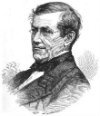Dots and Dashes: Wheatstone Obituaries
 'Our readers will have learned with great regret the news of the death, in Paris, of Sir Charles Wheatstone, one of the greatest modern inventors.' So begins The Times' obituary of Wheatstone on October 22nd 1875 (p. 8), a few days after his death.
'Our readers will have learned with great regret the news of the death, in Paris, of Sir Charles Wheatstone, one of the greatest modern inventors.' So begins The Times' obituary of Wheatstone on October 22nd 1875 (p. 8), a few days after his death.Given his work on telegraphy, the life of this 'greatest' of inventors plays an important role in our project, whilst at the same time we are interested in compression, brevity and scale. Therefore, this week we at Scrambled Messages have been reading all the Wheatstone obituaries we could get our hands on; this led to a profitable discussion of what this short form can do to a life. We have looked at a range of obituaries, but were surprised we did not easily discover more (although some more digging will, no doubt, bring more to light): two obituaries from The Times (both the one mentioned above and a longer piece published on the 28th October after his funeral), the obituary from The Leeds Mercury (21 October 1875, n.p.) which makes use of information from Men of the Times and appeared also in The Glasgow Herald, a transcript of a memorial speech given by the President of the Society of Telegraph Engineers (Journal of the Society of Telegraph Engineers, 10 November 1875, pp 319-334), a short piece placed in the 'Science Notes' section of The Friend of India (27 November 1875, p. 1058), the obituary from Capital and Labour (October 27th 1875, p. 622) , his inclusion in lists of deaths in The Pall Mall Gazette (28 December 1875, p. 7) and Harper's New Monthly Magazine (Vol. 52, December 1875, p. 155), and the obituary from The Graphic (30 October 1875, p. 436) illustrated with an engraving from a photograph by the London Stereoscopic Company, an interesting choice given Wheatstone's development of the stereoscope (our Wheatstone archive contains a number of original stereoscopic images - see the catalogue here and here).
When condensed to one item in a list, Wheatstone's life becomes 'the electrician' or simply 'F.R.S.'. He sits alongside 'the civil engineer', 'the naturalist', and 'the geologist' in The Pall Mall Gazette and 'the sculptor', 'the well-known journalist' and 'grandson of Thomas Jefferson' in Harper's, lives as phrases, men worthy of rememberance due to their profession or their relations. Alongside the obituaries we also looked at an extract from Judith Butler's Precarious Life. She finds that obituaries are sites in which 'lives are quickly tidied up and summarized, humanized' and proceeds to argue that 'we have to consider the obituary as an act of nation building' in its signalling of those lives worthy of recognition. [1] Yet in considering the variety within Wheatstone's obituaries, we might go further than this. Wheatstone's life seems to change depending on the audience of the obituary; obituary becomes a means through which a publication can voice its concerns, readers of different periodicals getting a different life. So, for example, The Friend of India places Wheatstone amongst a whole range of scientists enagaged in telegraphic experiment, presenting a global scientific community collectively developing telegraphy; he appears much less than 'one of the greatest modern inventors' portrayed in The Times.
In our meeting we began to think of these compressions of a life as comprising strands, a different form from the full biography with its chapters providing neat epochal moments and tidy turning points of crises. Instead the obituary brings the strands of the life together to twist linearly, chronologically, from birth to death, perhaps like the armour of the telegraph cable, producing a visible face of the person's life, but concealing a more central component. Where was Wheatstone's private life? His obituaries present different elements of his working life, through his papers, his experiments, his awards, the associated controversies of the telegraph, but so little was revealed about his personal life. Some obituaries tells us that 'he married Emma, daughter of Mr. J. West', in 1845 and left behind 'several children' (Graphic, and Times, 22 October) and in the second of the Times pieces we learn that one of his sons was Mr. Charles Wheatstone, that Wheatstone was buried where his parents were, and that a 'devotedly attached' old servant of the family 'gave vent to her feelings without restraint', no more than that. This only vague, incomplete, yet at times suggestive depiction of the private man may arise from his, or his family's, endeavours to keep his private life just so. But I wonder, perhaps, if a focus on the working, achieving public life dominates the form of Victorian obituary. We plan to compare the strands comprising Wheatstone's obituaries to those of the geologist Sir Charles Lyell, who also died in 1875, to explore this idea.
I do wonder if these features we found in the Wheatstone biographies are anomalous, but the differences between these presentations of a single life proffer much worth consideration. To take the idea of the strands of obituary as cable armour further, I have been thinking (perhaps somewhat fancifully) about the flexibility that this might afford in its protection of the non-visible aspects of a life. In selecting and wrapping together different public aspects of Wheatstone's life different publications bent it to suit their purposes. Our exploration this week suggests that, although tightly packed and compressed, obituary fails to display a rigidity that one might expect from such a short and repeated form.
[1] Judith Butler, Precarious Life: The Powers of Mourning and Violence (London: Verso, 2006), pp. 32, 34.
Dots and Dashes is a series of blogs by the team responding to our meetings.
Image available here
